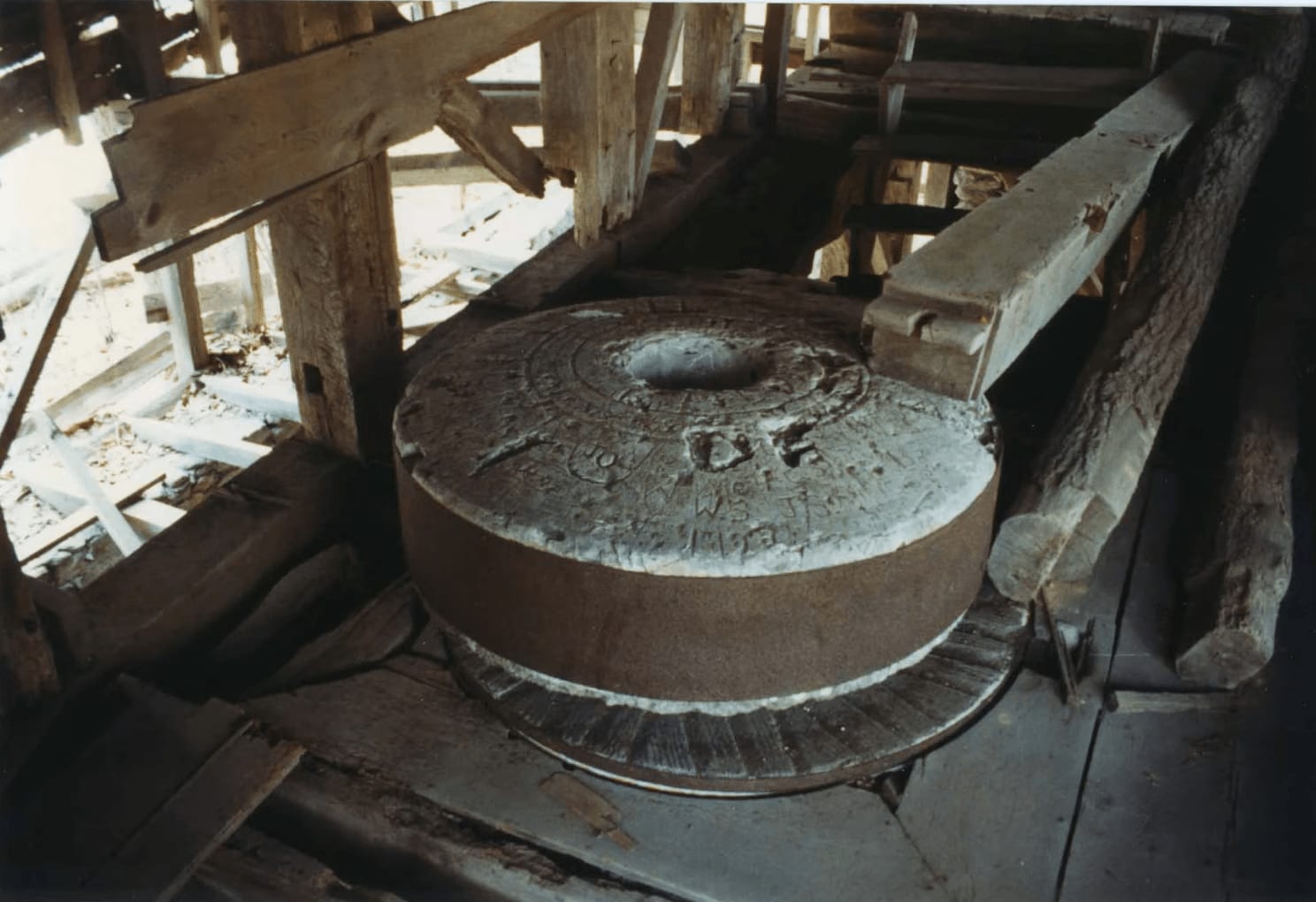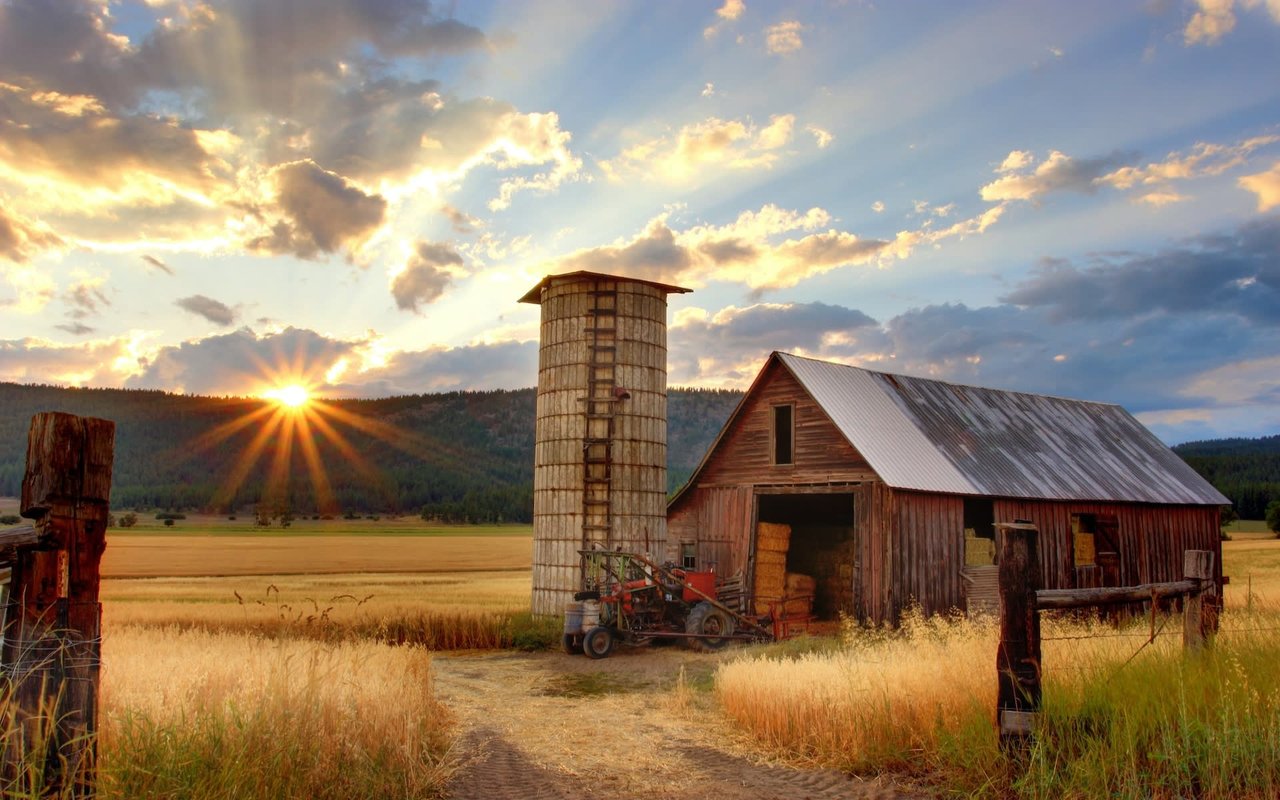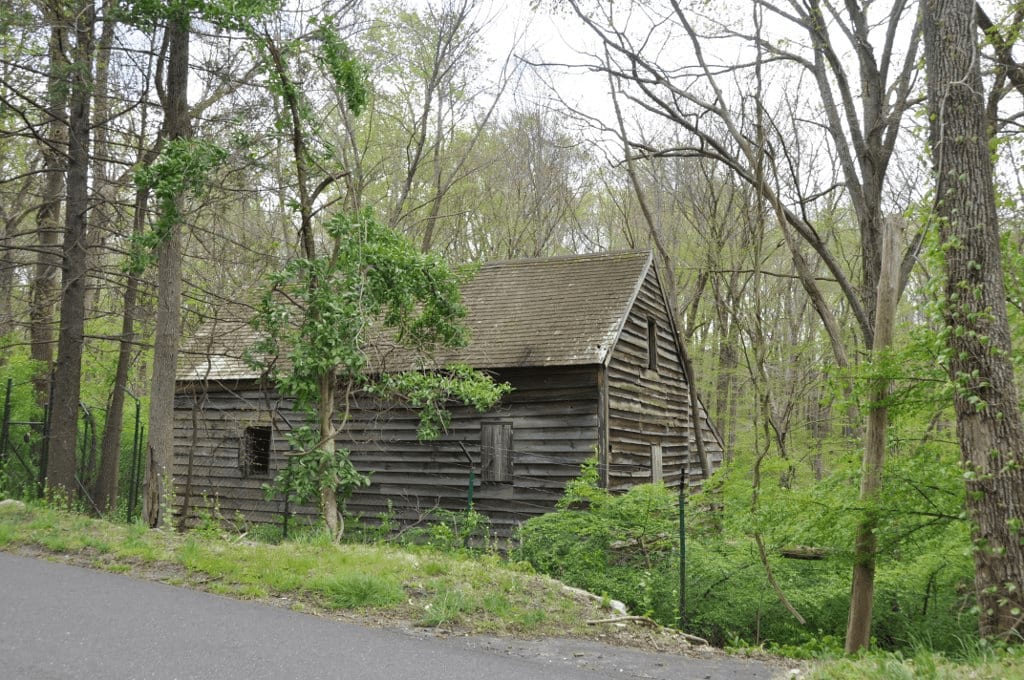In 1796, Greenwich was a very different place; it was a farming community. Our farms sent their produce to New York City via regular packet boats that left from a dock just below the Greenwich Historical Society’s Bush Holley House on Strickland Road in Cos Cob. If you happened to be a farmer in north Greenwich, who liked their daily bread, you had to make a long trip down to the mill in Byram to have your grain ground in to flour.
Sylvanus Selleck got fed up with the trip and decided to build his own gristmill just east of Round Hill Road on his 47-acre farm. Not only would he get flour for his family, but he’d get paid for providing a valuable service to the neighboring farmers in North Greenwich.
A gristmill was a major undertaking. It had to be sturdy enough to survive the “daily grind” and therefore was built out of large chestnut and oak timbers. You also had to build a dam to have a steady supply of water.
Building a mill wasn’t cheap and Sylvanus had to sell part of his farm to raise the money to build a sturdy mill that would last. Over the ensuing years, tons of grist, grain of various types that had had it chaff removed, would be brought to Sylvanus’ gristmill. The grist would feed from a hopper down between the runner stone and bed stone. These stones were wrapped in iron belts and weighed thousands of pounds. As the runner stone rotated, the grain would be ground to various coarsenesses from “fair to middling” to fine. The flour would fall out of the edge of the grindstones into a meal spout and then into a flour bag.

This wasn’t a passive process. Sylvanus was required to “keep his nose to the grindstone” and constantly adjust the pressure of the runner stone on the bed stone. If there was too much pressure, then the friction could burn the flour and possibly even lead to a fire. His nose near the grindstone gave him the first indication that he needed to let up on the pressure to properly grind the grist. It was a little slower, but no wanted toasted flour. However, if he let up on the pressure too much, the flour would be too course and when he ran it between his thumb and forefinger, the “rule of thumb” would tell him that the flour would have to be reground finer.
In 1846, fifty years after the mill had started grinding its first grain, Edwin Knapp, bought Sylvanus’ farm, barn and grist mill at auction. The original mill had a vertical water wheel that was powered by the water flowing along Converse Brook. In 1860, after 14 years of ownership, Edwin Knapp went high tech. He took off the old vertical water wheel and installed a state-of-the-art horizontal turbine at the base of the mill. The remnants of iron pipe that fed the stream water to this turbine can still be seen going from the brook to the mill. He also put a shed dormer in the place of the original water wheel to provide more storage space.
The mill continued to grind wheat, corn, oats, and rye until Edwin Knapp’s death in 1895, but that was the end of the operating meal. His daughter and son-in-law, who inherited the farm, decided that the miller’s life was not for them.
What is remarkable is that this mill, last operated in 1895, is still there, now located behind a fence on the eponymous Old Mill Road. In its heyday there were hundreds of mills across Connecticut. Most built on the post and beam model of this mill with heavy braces in the thick framing to stand up to the constant vibration of thousands of pounds of grinding millstones.
Because Sylvanus sold part of his farm to build an extra solid mill, it means that it is still here 226 year later. He built what is now possibly the oldest commercial structure in town. Sylvanus Selleck gristmill is one of only two surviving 18th Century mills in Connecticut and it needs help. The last couple of decades have been hard on the mill. The roof leaks, the back wall of the 1860 dormer was damaged in the Hurricane Ida flood and old age is creeping into everything.
A lot of funds have been spent to temporarily stabilize the mill, but it badly needs much more work to last another 100 or 200 years. A “Friends of the Selleck Mill” committee has been formed consisting of Debra Mecky, Executive Director of the Greenwich Historical Society, myself, representing the Round Hill Association, Will Kies and Nancy Stuebe.
The Greenwich Historical has created a donation page for those of you that want to keep Greenwich’s history alive. You can go to greenwichhistory.org and click on “Support”, then Donate, and scroll down to the “Sylvanus Selleck Gristmill Fund” or if you are reading this online go to https://greenwichhistory.org/sylvanus-selleck-gristmill/.
While there you can check out the very cool video that Alexander Stuebe, a student at the King School did about the Sylvanus Selleck Grist Mill. His videos had much to do with reactivating interest in preserving the Selleck Mill. And, if you like these articles about Greenwich real estate that I’ve been writing for the last several years you could throw in a little extra for a good cause.











